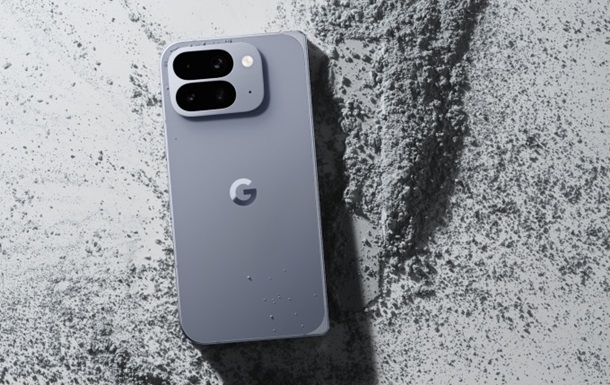
Google introduced a series of smartphones Pixel 10 and Fold
Externally, the devices have hardly changed compared to the previous generation.
The company showed three flagship smartphones and a new folding smartphone, which became the first foldable smartphone with full dust protection.
Google officially presented a new generation of its flagship smartphones – Pixel 10, Pixel 10 Pro and Pixel 10 Pro XL. Externally, the devices have hardly changed compared to the previous generation, but there have been noticeable updates inside.
The main innovation was the Tensor G5 processor – the first chip of Google’s own design, manufactured at TSMC’s production facilities. It provides a significant increase in the performance of the central processor and a significant improvement in machine learning tasks thanks to an upgraded AI accelerator. The new chip allows smartphones to use local artificial intelligence capabilities more widely without resorting to cloud services.
The manufacturer has increased the battery capacity in all models: the Pixel 10 has a 4970 mAh battery, the Pixel 10 Pro has a 4870 mAh battery, and the Pixel 10 Pro XL has a 5200 mAh battery. The displays have become brighter, but their diagonals have remained the same: 6.3 inches in the Pixel 10 and 10 Pro and 6.8 inches in the Pixel 10 Pro XL. In the US, smartphones no longer support physical SIM cards – they only work with eSIM, and can use two active profiles at the same time and store more than eight different ones.
The camera system has also undergone noticeable changes. The Pixel 10 has a telephoto lens with a five-times optical zoom, which works on a 10.8-megapixel sensor. The main camera is now 48 MP, and the third camera is a wide-angle lens with a 13 MP sensor. The Pixel 10 Pro and Pixel 10 Pro XL have an improved telephoto lens, the main camera is 50 MP, and the wide-angle is 48 MP. In the Pro versions, when shooting with a large zoom, over 30x, a generative diffusion model is used, which draws out details. Such shots are marked with a special mark thanks to support for the C2PA standard in the Google Photos application.
An important update was support for the Qi2 wireless charging standard. On the back of the devices, a magnetic Pixelsnap ring appeared, which is compatible with new Qi2 accessories, as well as with existing Apple MagSafe devices. At the same time, Google introduced its own accessories – a stand with a magnetic mount and a detachable charging module, as well as a ring holder that can act as a stand. The Pixel 10 and Pixel 10 Pro have a charging speed limited to 15W, while the older Pixel 10 Pro XL supports the Qi2.2 standard and can charge up to 25W.
Software capabilities have also been developed. One of the key features is the Magic Cue service, which offers tips in real dialogues. For example, it can automatically find an address in the mail and insert it into a chat or show the reservation number when calling an airline. All functions work locally and do not store personal data. In addition, users have access to AI Camera Coach – a virtual assistant that suggests how to best compose a frame, as well as an updated Magic Editor with support for text tips. A journal with AI analysis of entries, an auto-emoji function and an improved translator that can not only translate text but also reproduce the voice of the interlocutor have been added to the set of features.
New products are already available for pre-order. They will go on sale on August 28 at a price of $799 for the base model Pixel 10, from $999 for the Pixel 10 Pro and from $1199 for the Pixel 10 Pro XL. The older model in the minimum configuration received 256 GB of memory, while the younger versions start with 128 GB.
In addition to the previous three flagships, the company also introduced the Pixel 10 Pro Fold, which became the first folding smartphone with IP68 certification. This means that the device is not afraid not only of water, but also of even the smallest dust, becoming the first in the segment of folding models with a similar level of protection.
The main difference from competitors was the new hinge design. Google abandoned the mechanism with gears, making it “gearless”. This solution allowed to improve protection against falls and increase smoothness of operation, while maintaining a low weight of the mechanism. The manufacturer claims that the smartphone can withstand approximately 50 folds per day for ten years, which is about 180 thousand cycles.
The Pixel 10 Pro Fold body has become slightly thicker when unfolded, and the width when folded has decreased by almost a millimeter. Thanks to thinner frames, the external display has grown to 6.4 inches, while the internal one has remained 8 inches, but now supports peak brightness of up to 3000 cd/m2 – higher than the previous generation.
The heart of the new product has also become the proprietary Tensor G5 processor. The device has a larger battery, although the exact characteristics have not yet been disclosed.

